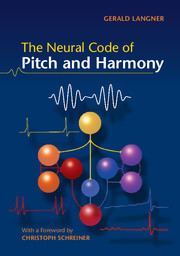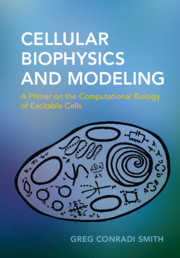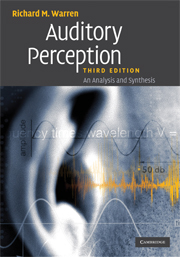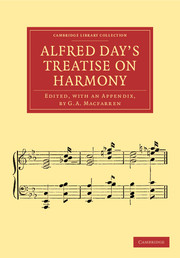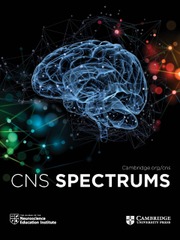The Neural Code of Pitch and Harmony
- Author: Gerald D. Langner, Technische Universität, Darmstadt, Germany
- Date Published: April 2015
- availability: Available
- format: Paperback
- isbn: 9780521697019
Paperback
Other available formats:
Hardback, eBook
Looking for an inspection copy?
This title is not currently available for inspection. However, if you are interested in the title for your course we can consider offering an inspection copy. To register your interest please contact [email protected] providing details of the course you are teaching.
-
Harmony is an integral part of our auditory environment. Resonances characterised by harmonic frequency relationships are found throughout the natural world and harmonic sounds are essential elements of speech, communication and, of course, music. Providing neurophysiological data and theories that are suitable to explain the neural code of pitch and harmony, the author demonstrates that musical pitch is a temporal phenomenon and musical harmony is a mathematical necessity based on neuronal mechanisms. Moreover, he offers new evidence for the role of an auditory time constant for speech and music perception as well as for similar neuronal processing mechanisms of auditory and brain waves. Successfully relating current neurophysiological results to the ancient ideas of Pythagoras, this unique title will appeal to specialists in the fields of neurophysiology, neuroacoustics, linguistics, behavioural biology and musicology as well as to a broader audience interested in the neural basis of music perception.
Read more- Offers an introduction to the neuronal mechanisms underlying our perceptions of musical pitch and harmony
- Brings together the latest research results about temporal processing and representation of sound in our brain, shedding new light on our everyday experience in speech and music
- Explains how the neural mechanisms of sound processing are compared with the processing mechanisms in the brain, offering an insight into our mental health and malfunction
Customer reviews
Not yet reviewed
Be the first to review
Review was not posted due to profanity
×Product details
- Date Published: April 2015
- format: Paperback
- isbn: 9780521697019
- length: 241 pages
- dimensions: 247 x 174 x 11 mm
- weight: 0.49kg
- contains: 132 b/w illus.
- availability: Available
Table of Contents
Preface
1. Historical aspects of harmony
2. Sound and periodicity
3. The discovery of the missing fundamental
4. The pitch puzzle
5. The auditory time constant
6. Pathways of hearing
7. Periodicity coding in the brainstem
8. Periodicity coding in the midbrain
9. Theories of periodicity coding
10. Periodotopy
11. The neural basis of harmony
12. The oscillating brain
References
Subject index.-
General Resources
Find resources associated with this title
Type Name Unlocked * Format Size Showing of
This title is supported by one or more locked resources. Access to locked resources is granted exclusively by Cambridge University Press to lecturers whose faculty status has been verified. To gain access to locked resources, lecturers should sign in to or register for a Cambridge user account.
Please use locked resources responsibly and exercise your professional discretion when choosing how you share these materials with your students. Other lecturers may wish to use locked resources for assessment purposes and their usefulness is undermined when the source files (for example, solution manuals or test banks) are shared online or via social networks.
Supplementary resources are subject to copyright. Lecturers are permitted to view, print or download these resources for use in their teaching, but may not change them or use them for commercial gain.
If you are having problems accessing these resources please contact [email protected].
Sorry, this resource is locked
Please register or sign in to request access. If you are having problems accessing these resources please email [email protected]
Register Sign in» Proceed
You are now leaving the Cambridge University Press website. Your eBook purchase and download will be completed by our partner www.ebooks.com. Please see the permission section of the www.ebooks.com catalogue page for details of the print & copy limits on our eBooks.
Continue ×Are you sure you want to delete your account?
This cannot be undone.
Thank you for your feedback which will help us improve our service.
If you requested a response, we will make sure to get back to you shortly.
×
